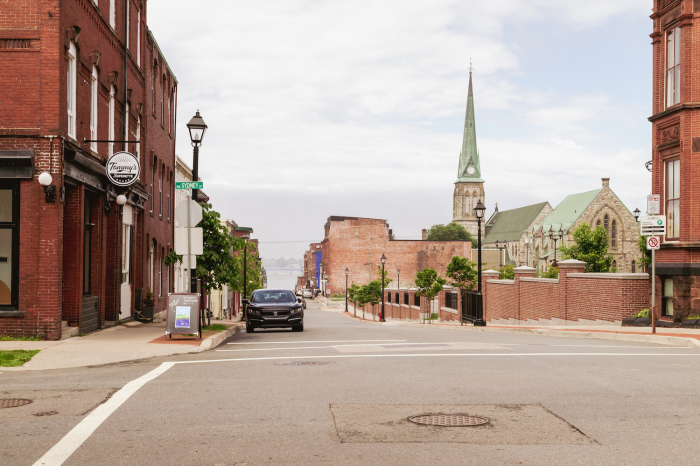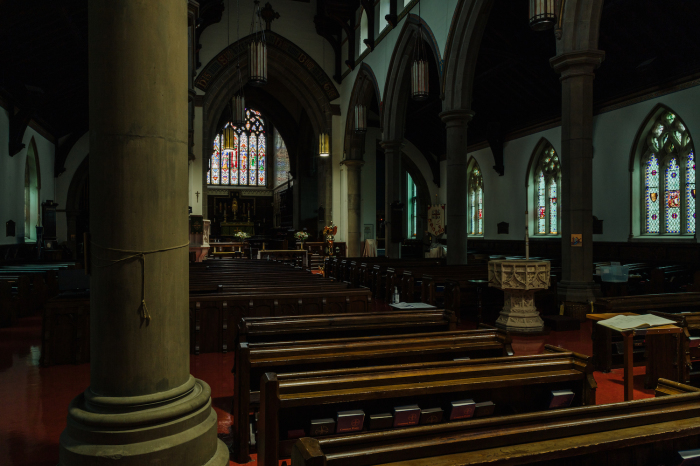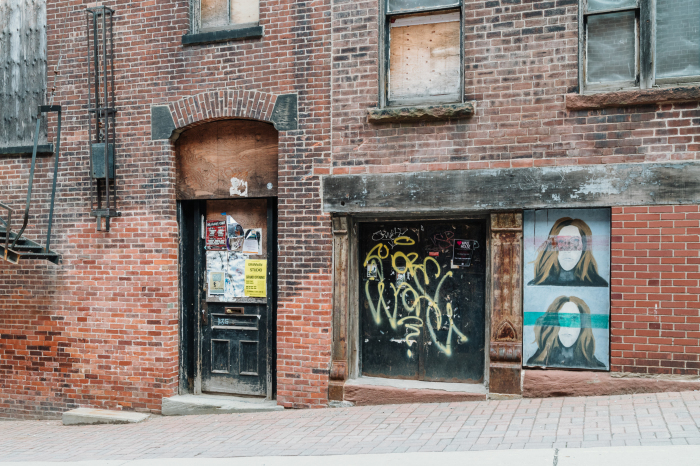In Canada’s New Brunswick, a British New England

New Brunswick looks and feels like New England had the British won the American Revolution or the war never happened in the first place.
While Canada has obviously evolved and developed its own distinct national identity since New Brunswick was founded in 1784 by Americans loyal to the British crown — some 15,000 loyalists fled here from the newly independent United States — I could feel the influences of New England and Britain everywhere I went on my summer road trip across the province.
The Britishness was mostly little things; think places or streets with names linked to the monarchy or statesmen. Some may find this a little ironic since New Brunswick is legally the only bilingual Canadian province. Meanwhile, the oldest towns and cities had a distinct New England feel.
Over the course of four nights and five days, I visited the somewhat sleepy provincial capital of Fredericton and explored the streets of Saint John, the oldest incorporated city in Canada, before driving along the Bay of Fundy.
Fredericton
Named after Prince Frederick, brother of King George III, the smallish city (population 58,220) is the seat of New Brunswick’s government.
Dominating the downtown, which is situated a block or two off the St. John River, are two landmarks: the Gothic revival Anglican cathedral and Second Empire-style building housing the New Brunswick Legislature.

A nearly identical copy of a 14th century church in England, Christ Church Cathedral owes its existence to the patronage of the Right Rev. John Medley, who in 1845 became the first Anglican bishop of Fredericton. While smaller than more famous Anglican and Roman Catholic cathedrals, it punches well above its weight and is actually one of the best examples of Gothic revival — an architectural style that became synonymous with churches — anywhere in North America.
The Legislature, which consists of a single or unicameral house, is in a building that feels familiar to anyone who has visited state capitols. Of course, like just about everything else in New Brunswick, the British influence is omnipresent. This includes the Legislative Assembly’s chamber, where a portrait of George III by Sir Joshua Reynolds hangs next to a throne that sees use when the lieutenant governor, as Queen Elizabeth II’s viceregal, opens the provincial parliament in a ceremony comparable to the president’s state of the union or a governor’s state of the state speech.
Other sights include the old British military buildings of the Historic Garrison District. Here, a community market is held every Thursday from 4:30 p.m. to 9 p.m. through Sept. 8. When I visited, the city band was performing a concert that included a tribute to the queen’s platinum jubilee. Then there is Government House, a kind of palace where the lieutenant governor lives and works. Those more interested in old churches will also want to see St. Anne’s, an Anglican chapel-of-ease from the same period as the cathedral.

Saint John
As one might expect from its location in Canada’s Maritime provinces, Saint John (population 68,895) has long been a port city.
Downtown (locals call it uptown) is a mix of various periods and styles, thanks to a fire in 1877 that destroyed most of the city. Ignoring some of the hideous 1960s architecture, including one of the ugliest city halls I have ever seen, the older brick buildings have the same character as the Rust Belt cities back home.
Walking around, you get a sense that Saint John is very much an underrated destination — yes, a little tired, but also poised for urban revitalization.
While the provincial museum is sadly closed with no announced reopening date, there are a number of other things to do and see, including the park-like Loyalist Burial Ground, King’s Square with its Edwardian-era bandstand, and Loyalist House, where five generations of a family that sought refuge in New Brunswick after the British lost the American Revolution lived.
Another stop on the self-guided Loyalist Trail is Trinity Church, an Anglican church that contains the royal coat of arms taken from Boston’s Old State House. There is also the newish Place Fort LaTour, a small recreated French trading post from the 17th century that stands as a visible reminder of the Acadians who settled here in the years after Samuel de Champlain claimed this part of North America for France.

About 40 minutes away near the loyalist-founded village of St. Martin’s is the west entrance to the Fundy Trail Parkway.
The 18-mile parkway parallels the coast along the Bay of Fundy at the western side of Fundy National Park. Separating New Brunswick from sister province Nova Scotia, the bay is known for twice-daily tides that are the highest anywhere in the world.
Besides scenic views that must be even more spectacular on a foggy morning or during fall colors, the slow-paced drive features 21 roadside lookout points as well as seemingly endless opportunities to hike, picnic or enjoy isolated beaches.
If you go
I flew into Fredericton, which has daily flights to hubs in Montreal and Toronto — making New Brunswick reachable from most major U.S. airports with just one connection. Canada’s two big airlines, United partner Air Canada and Delta partner WestJet, serve the recently renovated airport.
With rental cars expensive and hard to come by this summer, you may want to consider driving to New Brunswick. The drive from the closest U.S. airport in Portland, Maine, is less than five hours. From Boston, it’s about six hours, depending on traffic.
In Fredericton, I stayed at the Crowne Plaza Lord Beaverbrook. While it has the best location, the upscale chain-branded hotel didn’t deliver the expected standard. A better alternative might be an Airbnb rental. For dinner, try Isaac’s Way inside the former county courthouse or Wolastoq Wharf.
For Saint John, book a room at the Holiday Inn Express & Suites. The hotel is a short walk along the harborfront from everything to do and see. Eat at Billy’s Seafood Company, a local favorite in the historic City Market, or East Coast Bistro.
Dennis Lennox writes a travel column for The Christian Post.
Dennis Lennox writes about travel, politics and religious affairs. He has been published in the Financial Times, Independent, The Detroit News, Toronto Sun and other publications. Follow @dennislennox on Twitter.





























